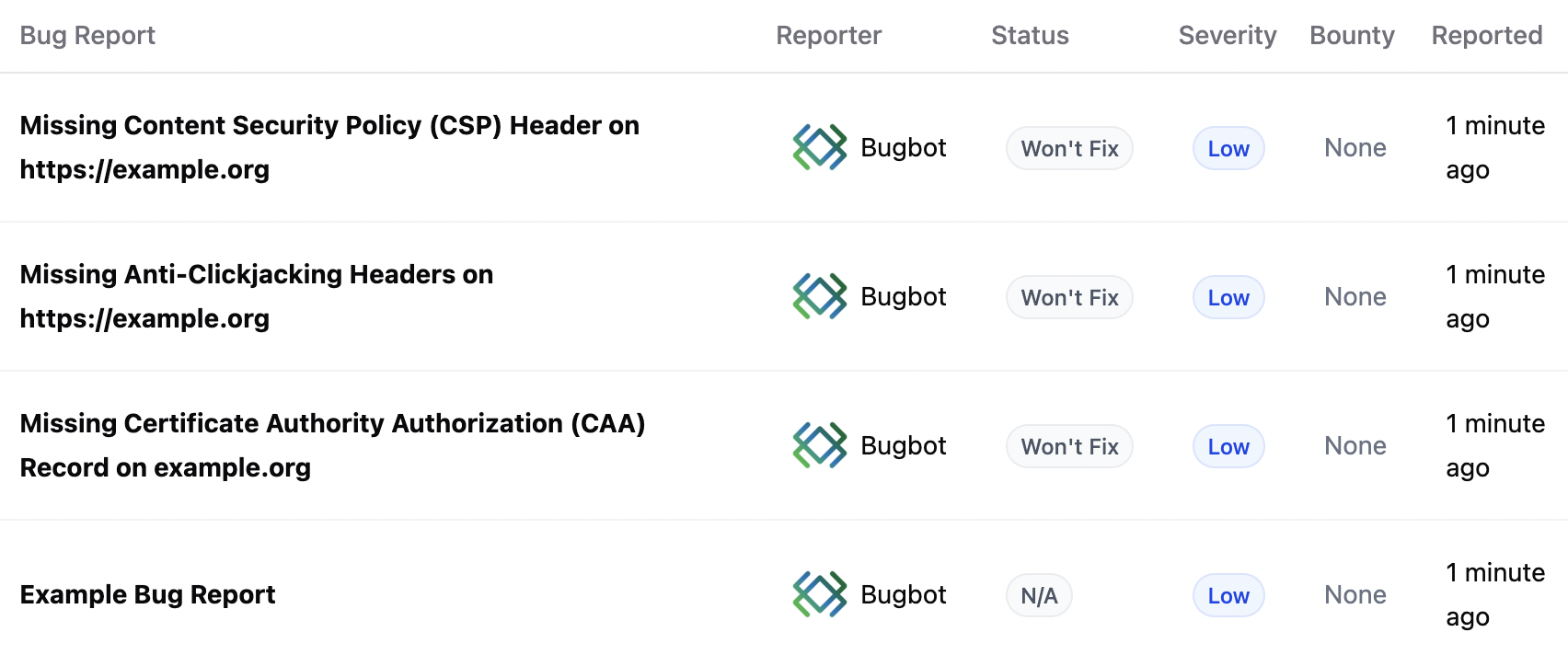Learn about automated security scanners and managing their reports
Bugbop's automated security scanners periodically check your domains for common security misconfigurations and raise them as Bug Reports. These Reports can be useful to catch security issues but they also assist in handling duplicate reports from bug hunters submitting the same basic security issues repeatedly.

| Scanner | Checks For | Type | Frequency |
|---|---|---|---|
| Example Scanner | Creates an Example bug to demonstrate the workflow of Bugbop | Special | Once |
| Clickjacking Scanner | Checks for headers to ensure clickjacking protection | HTTP Header | Daily |
| CSP Scanner | Missing Content-Security-Policy HTTP header | HTTP Header | Daily |
| DMARC Scanner | Missing DMARC DNS TXT record | DNS Record | Hourly |
| CAA Scanner | Missing Certificate Authority Authorization DNS records | DNS Record | Hourly |
| Loose SPF Scanner | Overly permissive SPF configuration | DNS Record | Hourly |
Automated reports are created by Bugbot and have standardized titles. To handle them:
Once you close a scanner report, duplicate submissions from bug hunters will automatically be detected by Bugbot's AI triage
If you close a report as "Fixed" but the scanner later detects the issue is still present, it will automatically change the status back to "Open" and add a comment to notify you.
You can enable or disable the Bugbot scanner when Editing Program's settings (View Program -> Settings -> Edit). This will turn off all scans - new reports will not be raised and old reports will not be rechecked.

Enable Bugbop's automated security scanners to continuously monitor your applications for common vulnerabilities and misconfigurations.